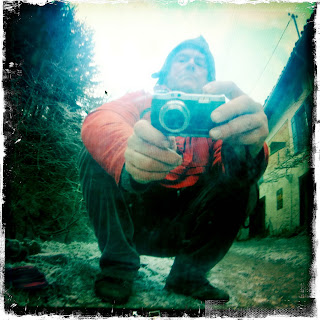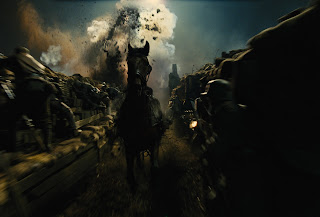It’s that time of year again, Oscars season is in full
swing, and film lovers eagerly anticipate February 26th. Irish films have traditionally done
well at the Academy Awards, with past nominees and winners including The Crying
Game, My Left Foot, Once, Give Up Your Aul Sins and The Secret of Kells. This
year Ireland is well represented once again with nominations for Albert Nobbs,
Pentecost and The Shore.
The IFI Irish Film Archive is honoured to hold the
Oscar statuette awarded to one of the previous Irish winners, renowned set
designer Josie MacAvin. Although the Archive’s collection is mainly comprised
of more traditional film-related materials (film, tape, dvd, stills, posters
and documents) it also contains some unusual and unexpected items including Kevin
Costner’s boots, an original poster from the set of Interview with a Vampire, and an Emmy to go with our Academy
Award.
Josie MacAvin (1919-2005) had previously been
nominated for two Oscars for her work on Tom Jones (1963) and The Spy
Who Came in From the Cold (1965), before her win for Out of Africa in 1986 with co-nominee Stephen B. Grimes. MacAvin
had a long and distinguished career as a set designer, and worked on Irish
productions including Ryan’s Daughter
(1970), Educating Rita (1983), The Field (1990) and Michael
Collins (1996) to name just a few.
The Emmy award in the Archive was also won by Josie
MacAvin in 1995 for her work on the television series Scarlett , making
her the first Irish person to win both an Oscar and an Emmy.
IFI Librarian Rebecca Grant with the Oscar
The Oscar statuette is a beautiful object, and while
it may not be obvious from watching the Oscars ceremony and its sometimes
lengthy speeches, it’s very heavy. The statue weighs in at
8.5 lb (3.85 kg) and is made of an alloy called Britannium which is
gold-plated, and stands on an inscribed metal base. While the Archive is of
course very lucky that such a prestigious item was deposited with us, the Oscar
isn’t something which can ever be sold for profit by the recipient. Oscars won
after 1950 cannot be sold by the winner or their heirs without being offered to
the Academy for the price of $1.
When
Josie MacAvin donated her Oscar and Emmy statues in 1992, she also gave the
Archive an extensive document collection which includes photographs, production stills, transparencies and sketches for films
which MacAvin was involved with, including Ryan’s Daughter, The Spy
Who Came in From the Cold, Out of Africa, A Man for All Seasons,
Shake Hands with the Devil, This is Dublin and W. B. Yeats: Poetry 1910 – 1939.
Researchers
are welcome to make an appointment to view Josie MacAvin’s collection, or any
of the other document collections in the Archive which have been donated by
filmmakers including Neil Jordan, Jim Sheridan, Pat Murphy and Tiernan
MacBride.
Rebecca Grant
IFI Librarian
- You can learn more about the IFI Irish Film Archive’s paper collections.
- To make an appointment to visit the Archive, email library@irishfilm.ie
- The 84th Academy Awards Gala will take place on February 26th from 11.30pm Irish time.



















